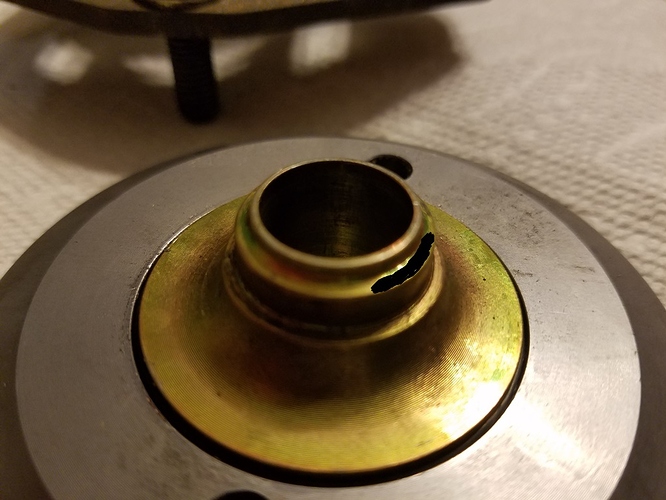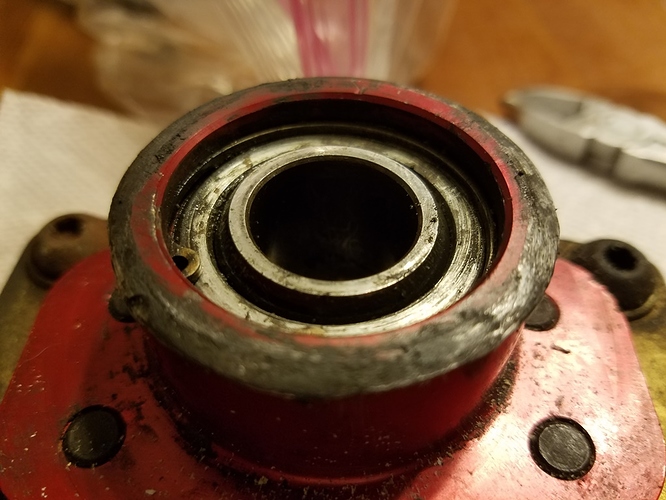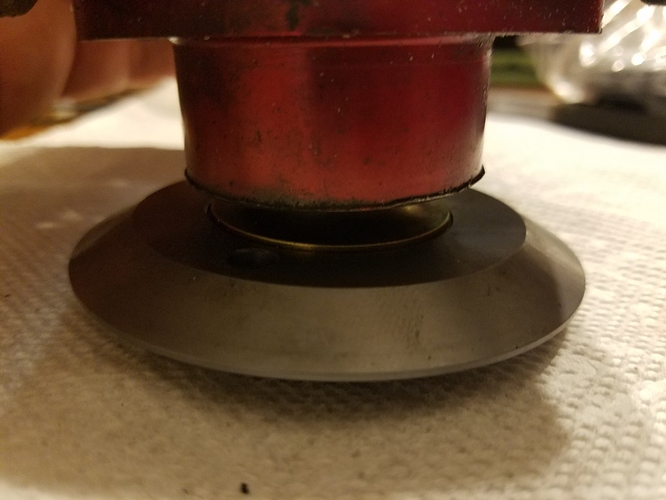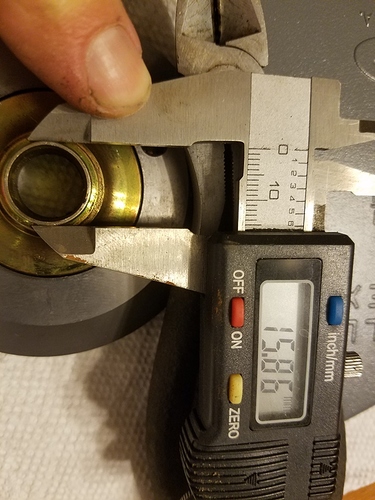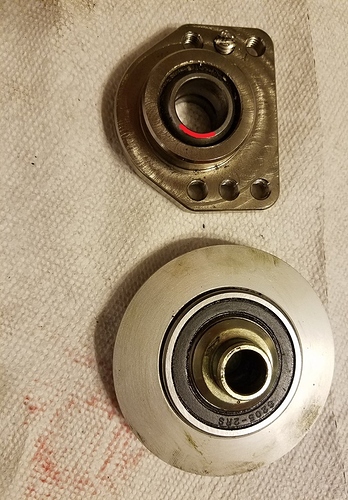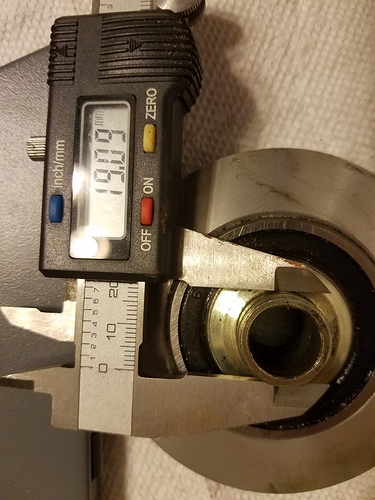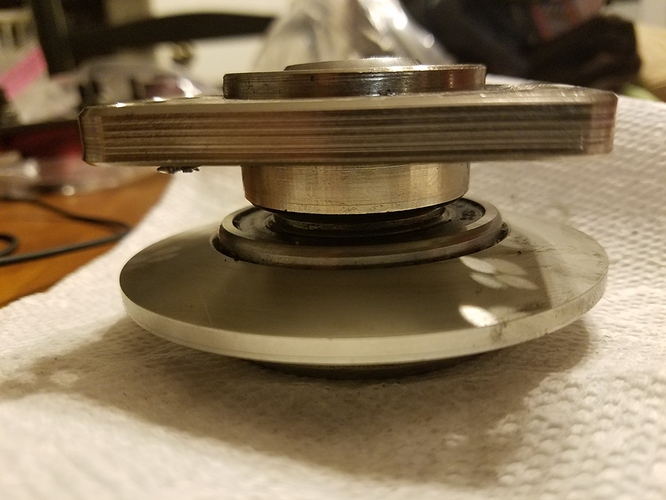Bottom line. The design of the two is not crazy different. Contrary to some rumors, there’s no GC magic going on such that their spherical bearing is less loaded then the Vorshlag design. The Vorshlag design definitely appears to be better, but maybe not because of the spherical bearing.
This pic shows the GC weight bearing piece. I attempted to mark in black the actual surface that bears the entire weight of the car. The weight bearing piece sits on roller bearings, as discussed in another thread, but that doesn’t change the fact that the entire weight of the corner is on the marked surface.
As you can see there isn’t much of an “insertion lip” adjacent to the marked load bearing surface. That lip is only 2mm high so doesn’t insert deep. Not much rigidity in that connection.
This pic has the GC camber plate flipped over. The GC weight bearing piece inserts into it.
This pic shows the GC top hat attached to the camber plate just like it would sit in your car. Note how the camber plate is a fair amount above the top hat. That’s important because that means that there’s no way some weight from that corner is pressing on the camber plate, except thru what I called the GC weight bearing piece, which transmits all load to the GC spherical bearing.
I measured the area of that marked surface. It’s ID is 15.9mm. The #'s worked out to 38.8 sq mm of steel bearing the weight of that corner. Call it 1/3rd of a sq cm. Doesn’t seem like much.
Vorshlag. Here’s the top hat (bottom) and the spherical bearing (in the slider) that it fits into. The surface marked in red is what bears the weight of the corner. If you look back at the top hat you’ll see that it has a tall lip that inserts into the It inserts 10mm deep which has to add rigidity to the connection.
Here I’m figuring out the size of the Vorshlag weight bearing surface. 19mm ID. The #'s worked out to 79.5 sq mm of surface area bearing the weight of that corner. That’s >2x the weight bearing surface area as the GC design.
This pic shows that, just like the GC design, the Vorshlag weight bearing element is transferring all weight to the spherical bearing.
I did not attempt to compare the spherical bearings themselves. I didn’t take them apart.
Summary.
–Both designs require that the spherical bearing support the entire weight of the corner.
–The Vorshlag “weight bearing piece” that transmits weight to the spherical bearing does so with >2x as much surface area. That would reduce the amount of stress on that part proportionally. .
–The Vorshlag weight bearing piece inserts 5x more deeply into the spherical bearing.
Bottom line. The Vorshlag design is significantly more robust. Of course, it’s also more expensive.



